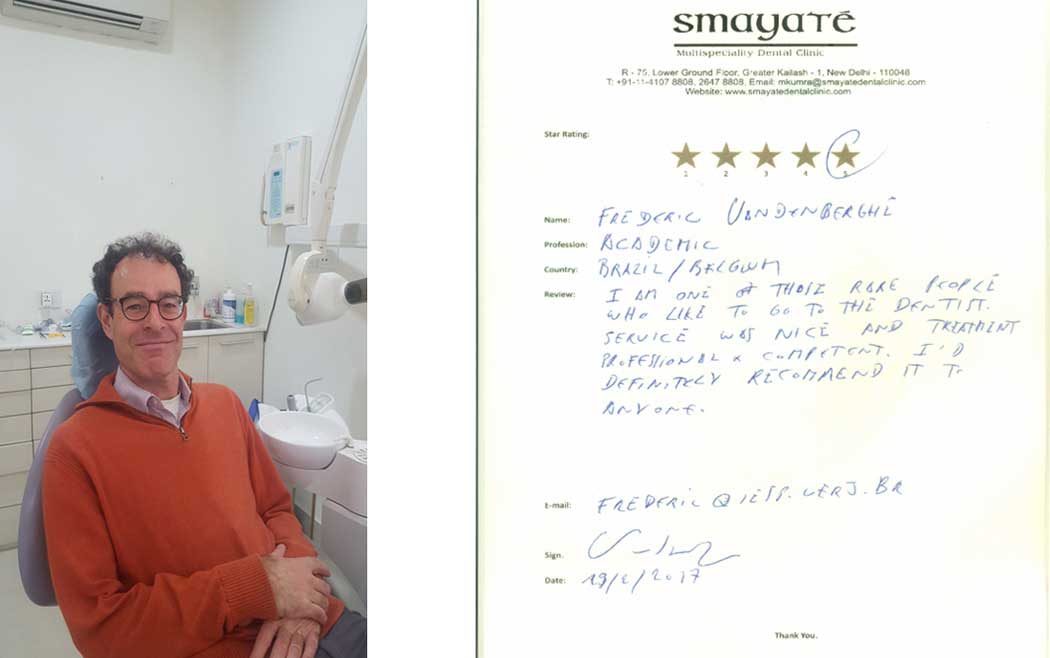Surgical Orthodontics/ Orthognathic Surgery
Corrective jaw, or orthognathic surgery is performed by an oral and maxillofacial surgeon (OMS) to correct a wide range of minor and major skeletal and dental irregularities, including the misalignment of jaws and teeth. Surgery can improve chewing, speaking and breathing.


Why do we need orthognathic surgery ?
Sometimes bite discrepancies are too large to fix with braces alone. There is often an incompatibility of the jawbones with one another or the jawbone’s relationship to the skull. First orthodontics is done to correct the problem and to prepare the case for a surgical procedure. What the braces cannot correct, the surgical procedure helps jaw come in the correct bite position.
In younger patients (age 7-9) jaw discrepancies can be corrected with orthodontics and sometimes orthognathic surgery may be avoided.
Sometimes the discrepancy of the jaw bones is just too much to be corrected without surgery. In adults, since we lack growth, a jawbone discrepancy will always be corrected with a surgery.
Am I a candidate for orthognathic surgery ?
You are a candidate for orthognathic surgery if you have the following
• Unbalanced appearance of the face—-either receding lower jaw and chin or Protruding jaw. This often leads to excessive wear of the teeth and difficulty in chewing , biting food or swallowing
• Difficulty Chronic jaw or jaw joint (TMJ) pain and headache
• Difficulty chewing, biting food or swallowing
• Excessive wear of the teeth
• Open bite (space between the upper and lower teeth when the mouth is closed)
• Facial injury
• Birth defects such as cleft lip and palate
Testimonial
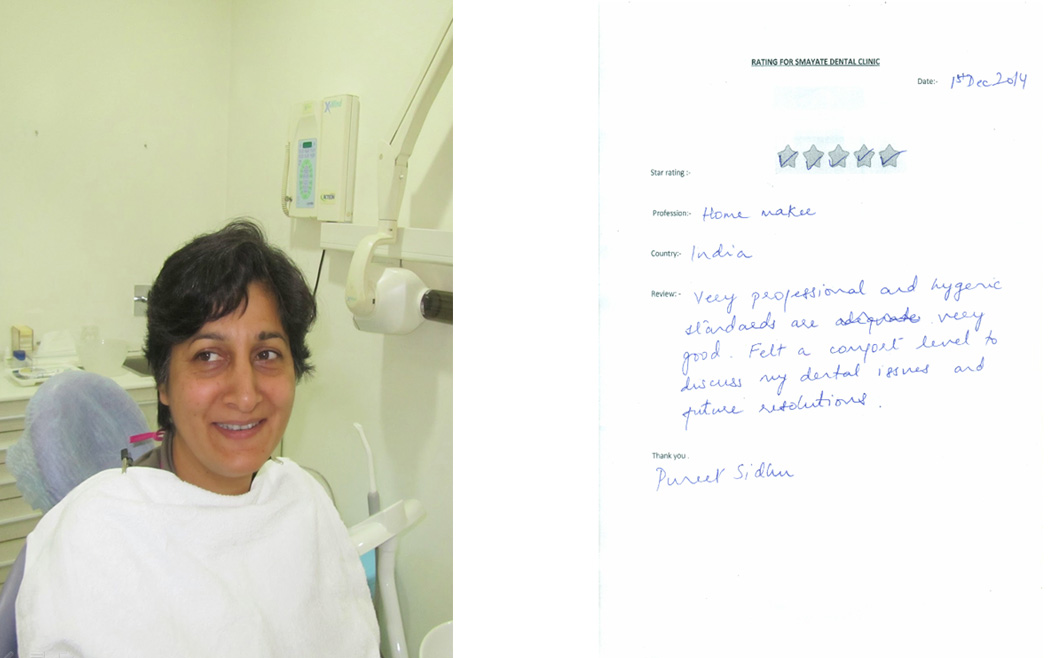
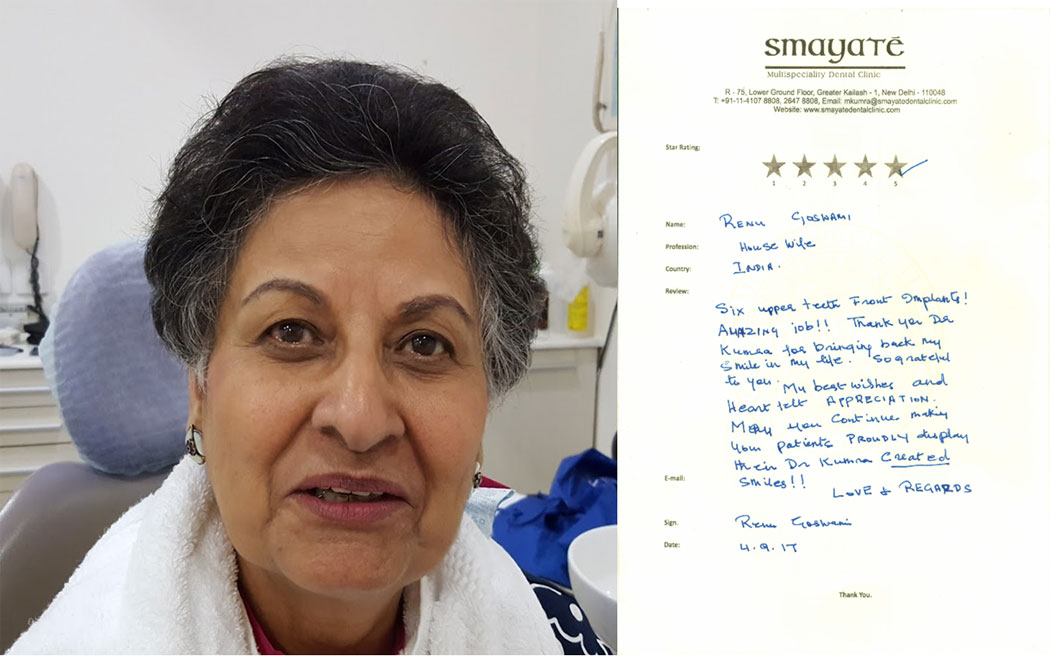
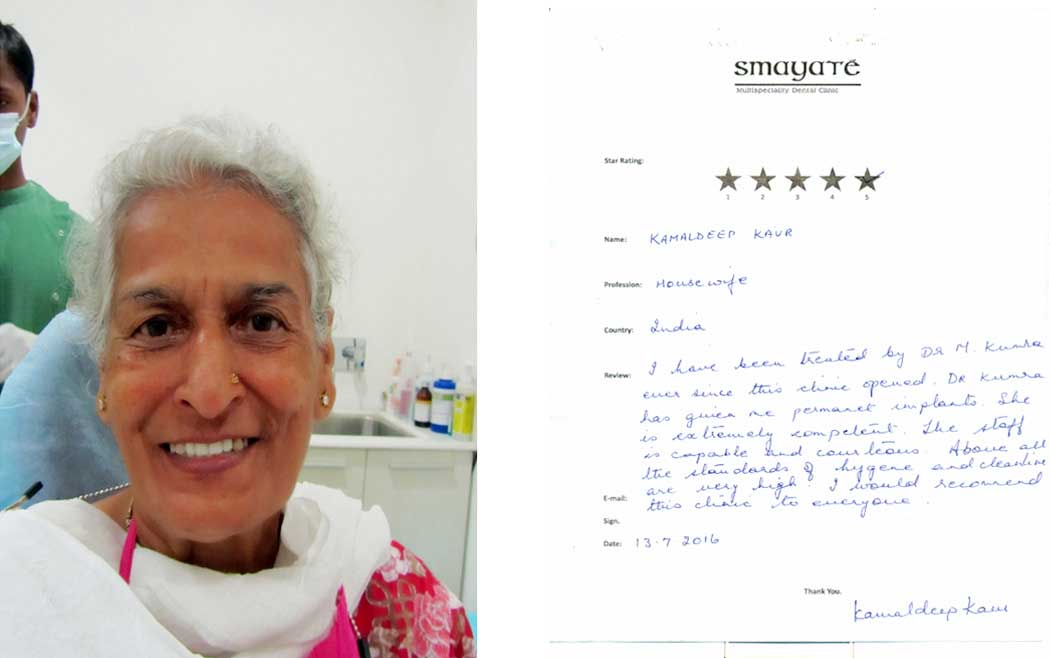
Col Das is a Retired Army Officer from the Indian army
Country : India
I am highly satisfied with the dental treatment of Smayate Dental Clinic.
The crown fitted on my upper central teeth has changed my look and I am certainly more confident with the enhanced smile after the treatment. Dr. Madhumani works like an artist
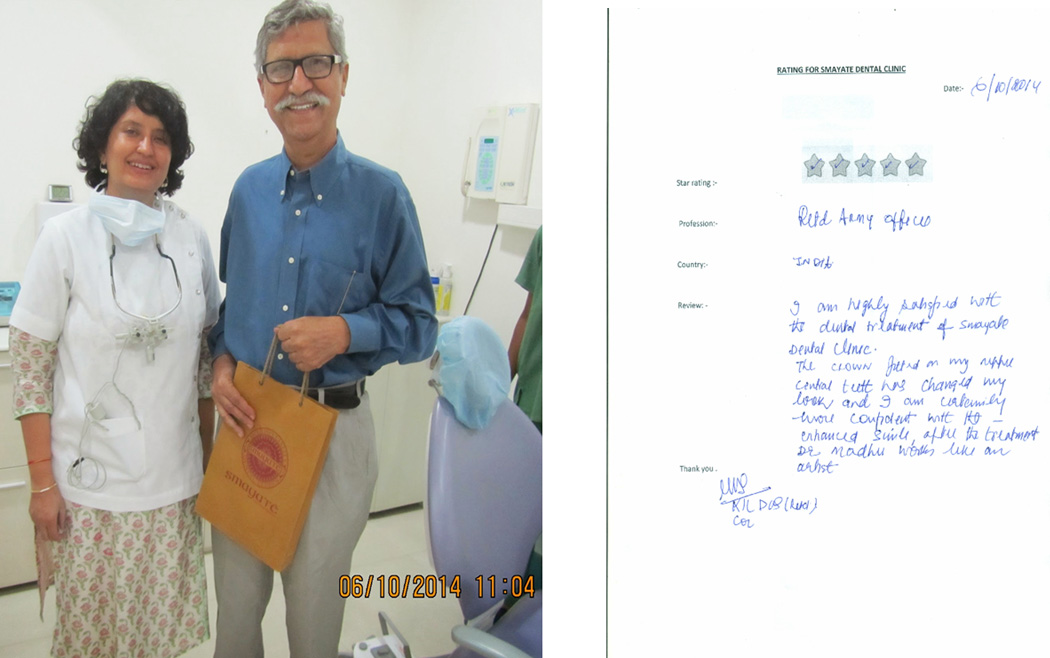
Famous Theatre Director & Writer from New Delhi
I love the personalized attention! Its neat, organized & caring. Normally a dentists Clinic is an intimidating space, fearful...here its calming & caring!
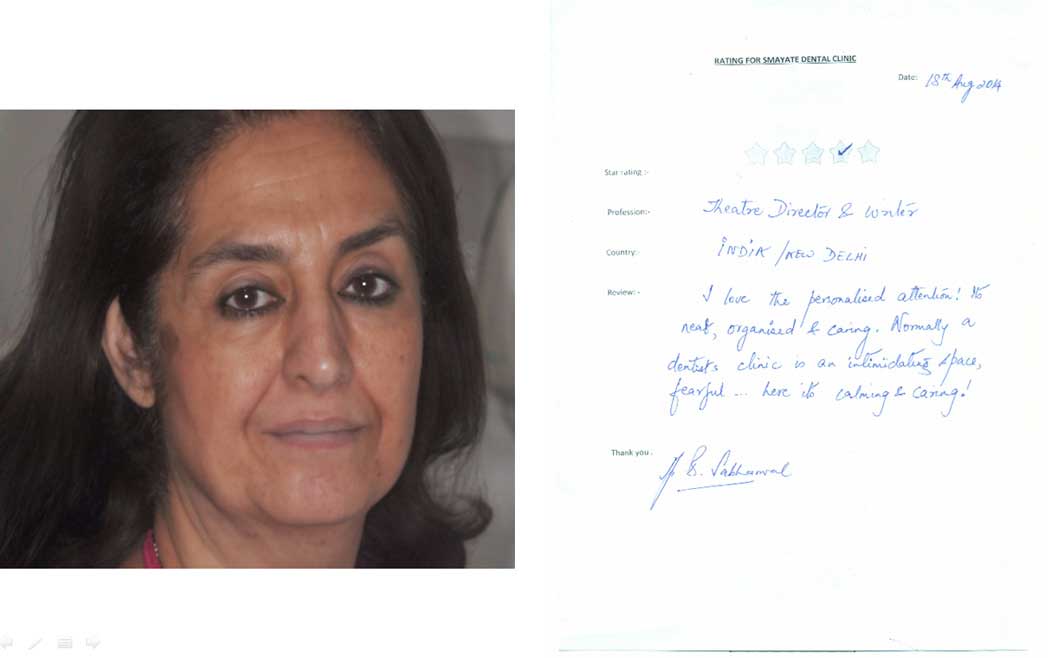
Psychologist from New Delhi
The clinic is very well equipped and is bring managed very well. I am more than satisfied with the setup and the professional attention I receive here. Thanks.
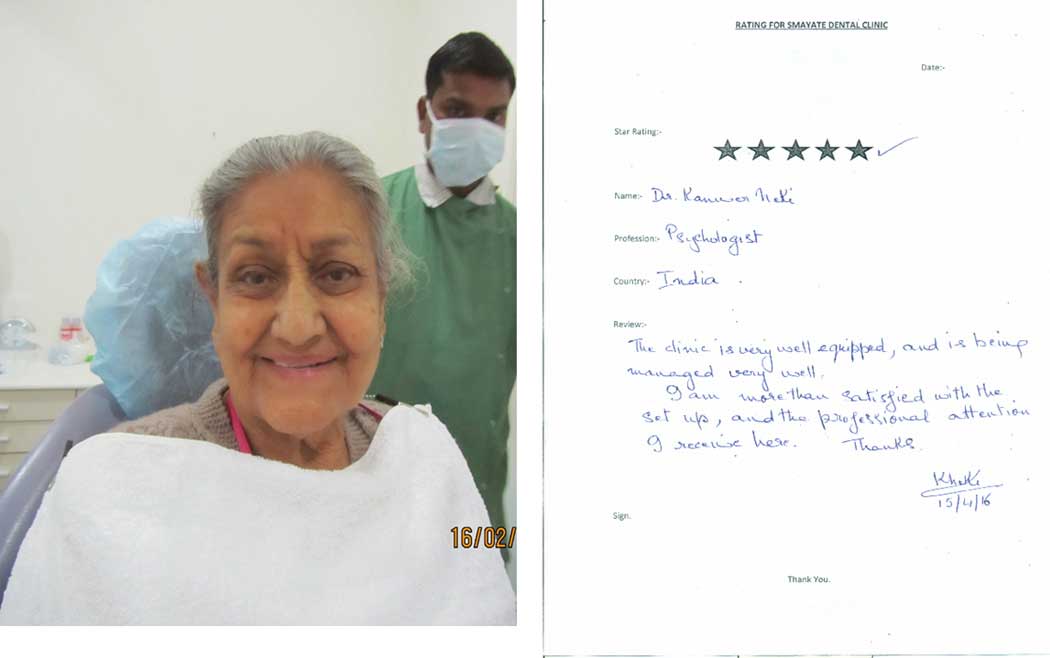
Professional Working in Academics at Brazil
I am one of those rare people who like to go to the dentist. Service was nice and treatment professional and competent. I would definitely recommend it to anyone.
